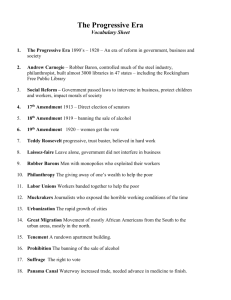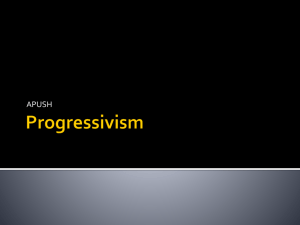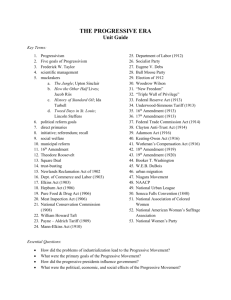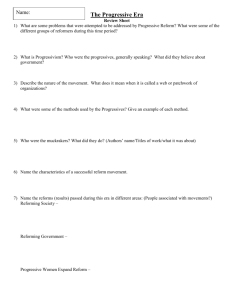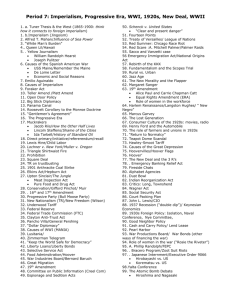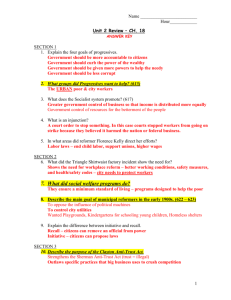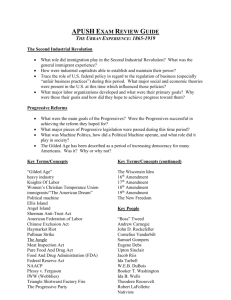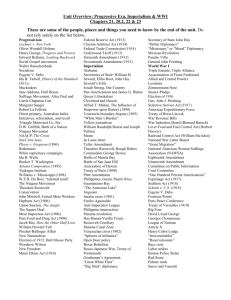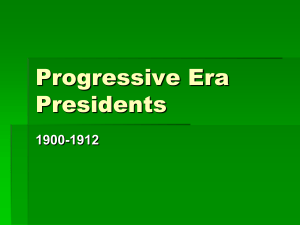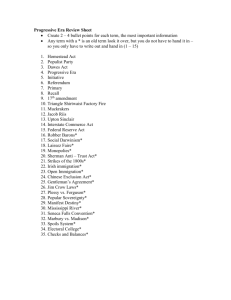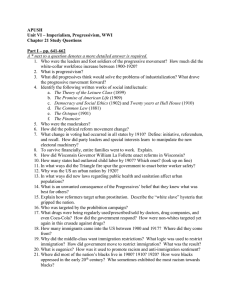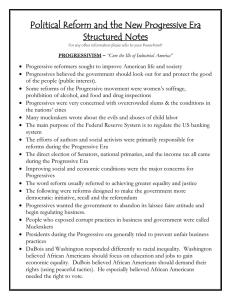AP U.S. History Review (Spring Semester) Part 1 of 3 The Industrial
advertisement
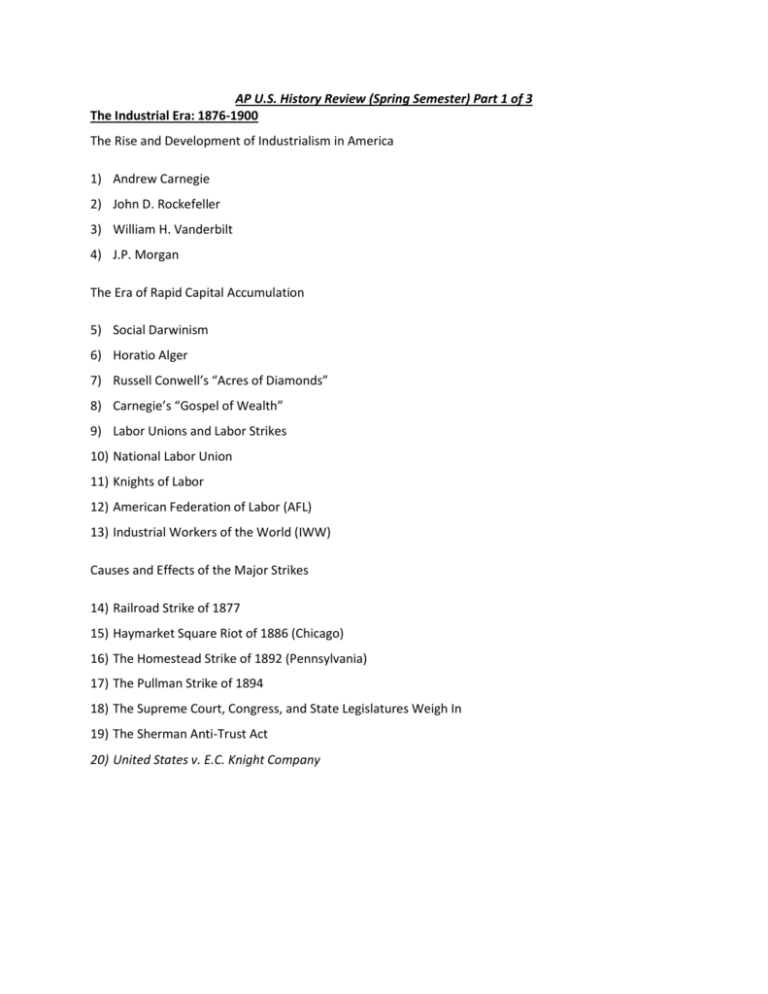
AP U.S. History Review (Spring Semester) Part 1 of 3 The Industrial Era: 1876-1900 The Rise and Development of Industrialism in America 1) Andrew Carnegie 2) John D. Rockefeller 3) William H. Vanderbilt 4) J.P. Morgan The Era of Rapid Capital Accumulation 5) Social Darwinism 6) Horatio Alger 7) Russell Conwell’s “Acres of Diamonds” 8) Carnegie’s “Gospel of Wealth” 9) Labor Unions and Labor Strikes 10) National Labor Union 11) Knights of Labor 12) American Federation of Labor (AFL) 13) Industrial Workers of the World (IWW) Causes and Effects of the Major Strikes 14) Railroad Strike of 1877 15) Haymarket Square Riot of 1886 (Chicago) 16) The Homestead Strike of 1892 (Pennsylvania) 17) The Pullman Strike of 1894 18) The Supreme Court, Congress, and State Legislatures Weigh In 19) The Sherman Anti-Trust Act 20) United States v. E.C. Knight Company Postwar Politics and the Populists: 1870’s-1896 21) The “soft” vs. “hard” money supply debate The Growth of Discontent: Farmers Organize 22) Munn v. Illinois (1877) 23) Illinois v. Wabash (1886) 24) The Populist Party U.S. Foreign Affairs From 1860 to 1914 25) U.S. Policy Towards Native Americans Following the Civil War a) Assimilation b) The Dawes-Severalty Act 26) The Purchase of Alaska 27) Methods Adopted by the U.S. to Achieve Its Imperialistic Goals a) Formal Imperialism i) Hawaii ii) Guam iii) Puerto Rico b) Informal Imperialism i) Open-Door Policy 28) Ideological Justifications for an American Imperialist Policy a) Alfred T. Mahan’s The Influence of Sea Power Upon History b) Frederick Jackson Turner’s “The Significance of the Frontier in American History” c) Religious justifications i) Josiah Strong d) Social Darwinism 29) Opponents of American Imperialism 30) U.S. Foreign Relations in East Asia and the Pacific 31) The Spanish-American War (1898) a) DeLome Letter b) Sinking of the U.S.S. Maine c) Foraker Act (1900) d) Insular Cases e) Cuba 32) U.S. Foreign Relations with Latin America and the Caribbean a) Roosevelt Corollary b) Dollar Diplomacy The Progressive Era: 1900-1920 33) Early Twentieth-Century Progressives a) Social Gospel b) Muckrakers 34) Reforming Local and State Political Systems a) Tammany Hall, Tweed’s “Ring”, Thomas Nast b) City (municipal) reforms c) State reforms d) Wisconsin’s Senator Robert La Follette 35) Reform Under Republican Presidents a) Theodore Roosevelt (1901-1908) i) Elkins Act (1903) ii) Northern Securities v United States (1904) iii) Hepburn Act (1906) iv) Pure Food and Drug Act v) Meat Inspection Act b) William Howard Taft (1909-1912) i) Mann-Elkins Act (1910) c) Woodrow Wilson (1913-1920) i) Underwood Tariff (1913) ii) Clayton Anti-Trust Act (1914) iii) Federal Trade Commission iv) Federal Reserve Act (1916) v) Adamson Eight-Hour Act (1916) vi) Keating-Owen Child Labor Act (1916) 36) Republican Party Splits Over the Following Issues a) Payne-Aldrich Tariff (1909) b) Ballinger-Pinchot controversy (1910) c) Taft’s antitrust suit against U.S. Steel (1911) 37) Election of 1912 38) Progressives and the Supreme Court a) Lochner v. New York (1905) b) Muller v. Oregon (1908) c) Adkins v. Children’s Hospital (1923) 39) Constitutional Amendments during the Progressive Era a) Sixteenth Amendment (1913) b) Seventeenth Amendment (1913) c) Eighteenth Amendment (1919) d) Nineteenth Amendment (1920) 40) The Women’s Rights Movement a) Margaret Sanger b) Alice Paul 41) The Socialist Challenge a) Eugene Debs b) Socialist ideas 42) Black Americans and the Progressive Movement a) Booker T. Washington b) W.E.B. Du Bois c) Marcus Garvey 43) The End of the Progressive Era: Success or Failure?
